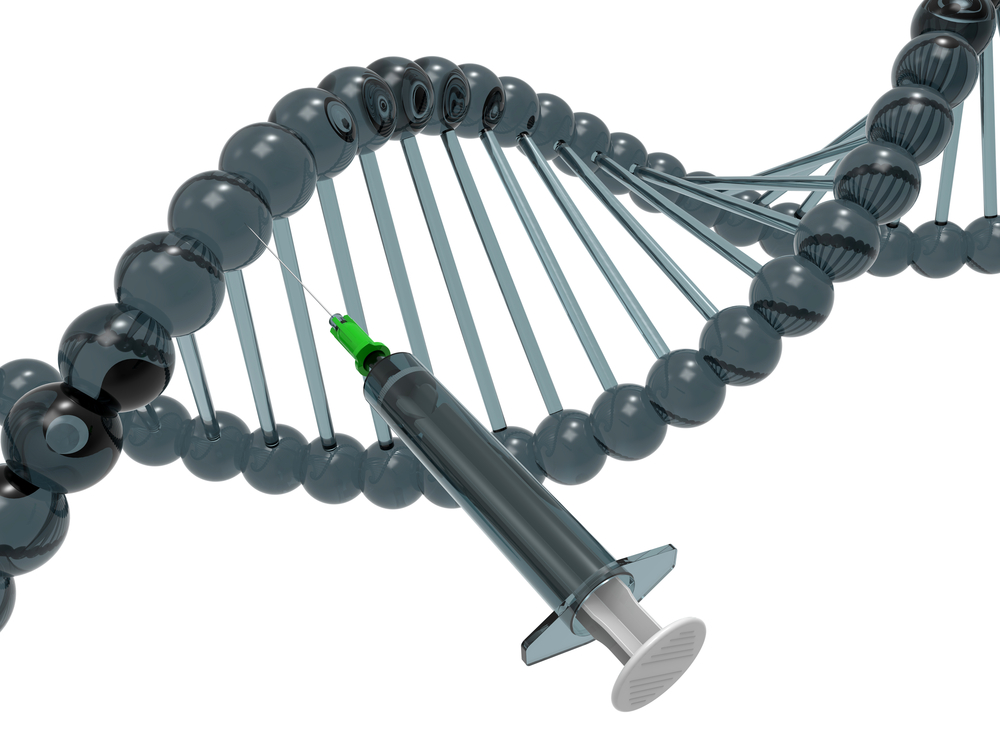Stem cell gene-editing method may be breakthrough for sickle cell research
Written by |

Researchers have cured mice with a genetic blood disease by correcting mutated genes in blood cell-producing stem cells. The method offers a new therapeutic approach for treating blood disorders, such as sickle cell disease and thalassemia.
The gene-editing technique can be administered easily into living animals and notably decreases off-target effects (side effects), unlike the CRISPR technique, which displays problems in those regards.
The study, “In vivo correction of anaemia in β-thalassemic mice by γPNA-mediated gene editing with nanoparticle delivery,” was published in Nature Communications.
Hematopoietic stem cells (HSC) give rise to all blood cells and are located in the red bone marrow. Gene editing of HSC provide a strategy for treatment of inherited blood disorders, such as sickle cell disease and thalassemia.
Typical gene-editing techniques like CRISPR use DNA-cutting enzymes to open the DNA at a target site to correct a specific gene. The problem is that researchers have to remove the cells from the body to treat them, and then reinsert them. There also is a risk that DNA is mistakenly cutted (off-target effects) by the enzymes at sites other than the target.
The new technique, developed by scientists at Carnegie Mellon University and Yale University, avoids these issues. In this instance, small synthetic peptide nucleic acid (PNA) can be injected directly into the body, and is designed to bind near the target site of the DNA and correct the gene by engaging the cell’s own DNA repair mechanism.
“We have developed a system that uses FDA-approved nanoparticles to deliver our PNA molecule to repair a malfunctioning gene in living mice. This has not been achieved with CRISPR,” Danith Ly, PhD, co-author, professor of chemistry at Carnegie Mellon and an expert in PNA chemistry, said in a news article.
The team used a mice model for thalassemia and injected the PNA together with a stem cell factor (SCF), which enhances gene editing. The mice received four treatments with two days interval at the beginning of the experiment. Complete blood count analyses were continuously performed on blood samples for several months after last treatment.
Analyzes showed sustained elevation of hemoglobin levels into the normal range and corrected anemia in the thalassemia mice. In addition, 7% of the mutated genes were corrected in HSCs, with notably low off-target effects. This could be compared to typical gene-editing method, which corrects only 0.1% of the genes.
“The effect may only be 7 percent, but that’s curative,” Ly said. “In the case of this particular disease model, you don’t need a lot of correction. You don’t need 100 percent to see the phenotype return to normal.”
There is still room for improvements of the PNA method through certain chemical adjustments. However, it is very promising that the technique shows improved gene-editing potency combined with “extremely low” off-target effects, according to the study.
“This next generation PNAs and SCF treatment may offer a minimally invasive treatment for genetic disorders of the blood, that can be achieved safely and simply by intravenous administration,” researchers wrote.




